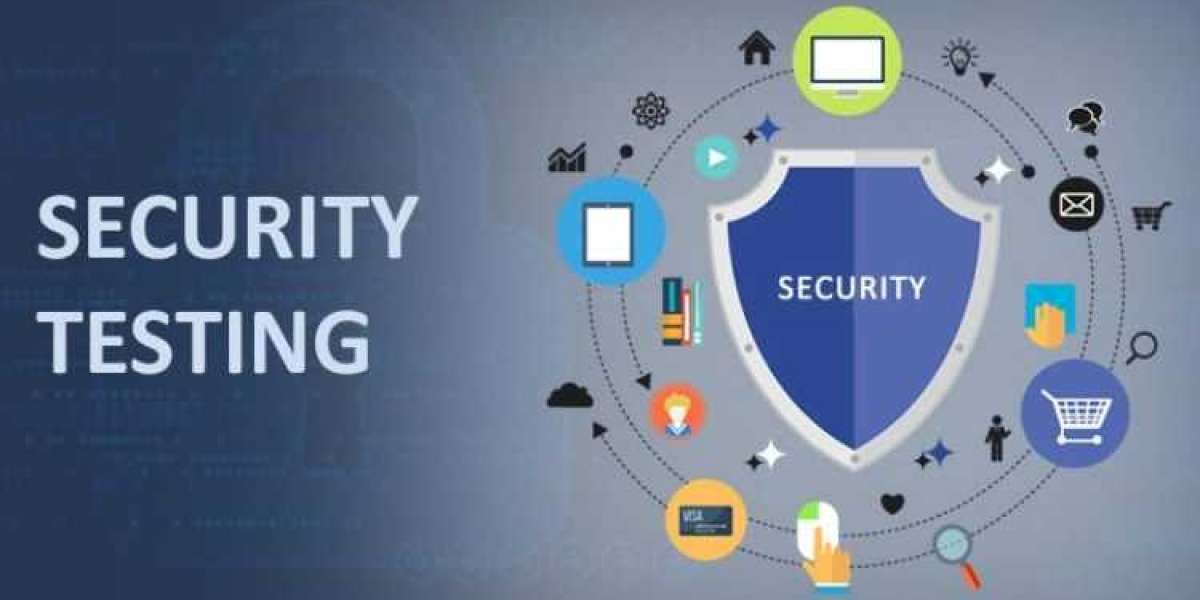In an increasingly digital world, the importance of security testing cannot be overstated. With cyber threats evolving rapidly, businesses are prioritizing their cybersecurity measures to protect sensitive data and maintain customer trust. The global security testing market size reached approximately USD 10.52 billion in 2023. The market is estimated to grow at a CAGR of 18.2% in the forecast period of 2024-2032, reaching a value of around USD 48.95 billion by 2032. This blog post aims to provide an in-depth analysis of the security testing market, exploring its various segments, regional dynamics, competitive landscape, and future outlook.
Market Overview
Security testing refers to the process of identifying vulnerabilities in applications, networks, and systems to protect against potential threats. As cyberattacks become more sophisticated, organizations are increasingly investing in security testing solutions to safeguard their assets. This growing awareness of the necessity for robust security measures is a significant factor driving market growth.
Several trends are propelling the security testing market forward, including the rise of cloud computing, increasing regulatory compliance requirements, and the growing adoption of the Internet of Things (IoT). These trends create an urgent need for comprehensive security solutions that can address diverse security challenges.
Market Segmentation
A. By Testing Tool
Code Review Tool
Code review tools are crucial for identifying vulnerabilities at the source code level. They help developers detect and rectify issues early in the development cycle, reducing overall costs and risks. Key players in this segment are continuously innovating to provide more efficient solutions, making them essential in the security testing toolkit.Software Testing Tool
Software testing tools ensure that applications function as intended while remaining secure. With the increasing reliance on software in business operations, the demand for these tools has surged.Web Application Testing Tool
As web applications become more prevalent, so do the associated security risks. Web application testing tools are essential for identifying and mitigating vulnerabilities, particularly in e-commerce and online services.Penetration Testing Tool
Penetration testing tools simulate real-world attacks to identify weaknesses in systems and applications. These tools are vital for organizations seeking proactive measures to enhance their security posture.Others
Emerging tools, such as security automation and threat modeling tools, are also gaining traction. These innovative solutions are essential for addressing new challenges in the cybersecurity landscape.
B. By Type
Application Security
Application security involves measures taken throughout the application lifecycle to protect against vulnerabilities. With applications being a primary target for cybercriminals, this segment is witnessing substantial growth.Device Security
As more devices connect to networks, the need for device security is becoming increasingly critical. This segment addresses vulnerabilities associated with various devices, including IoT and mobile devices.Others
Other types of security testing include network security and infrastructure security, each addressing specific aspects of an organization’s security framework.
C. By Enterprise Size
The security testing market serves enterprises of all sizes, from large corporations to small and medium-sized enterprises (SMEs). Large enterprises often have complex systems requiring advanced security solutions, while SMEs face budget constraints and may opt for more cost-effective tools. The differences in requirements present unique challenges and opportunities for vendors.
D. By Deployment Mode
On-Premises
On-premises solutions offer control and customization but may involve higher upfront costs and maintenance challenges.Cloud-Based
The cloud-based model is gaining popularity due to its scalability and flexibility. Organizations can quickly adapt to changing needs without significant investments in hardware.Hybrid
Hybrid deployment combines the benefits of both on-premises and cloud-based solutions, allowing organizations to tailor their security strategies based on specific requirements.
E. By Industry Vertical
Healthcare
The healthcare industry faces unique security challenges due to the sensitive nature of patient data and strict regulatory compliance. Security testing solutions are critical for safeguarding this information.Finance
Financial institutions are under constant threat from cyberattacks, making security testing vital for compliance and risk management.Retail
With the rise of e-commerce, retailers must protect customer data from breaches. Security testing tools are essential for maintaining trust in online transactions.Others
Industries such as manufacturing and government are also increasingly adopting security testing solutions to combat specific threats.
Regional Analysis
The global security testing market exhibits varied dynamics across different regions.
North America
Dominating the market, North America is home to numerous key players and benefits from advanced technological infrastructure and high cybersecurity awareness.Europe
Europe follows closely, with stringent regulatory frameworks driving the adoption of security testing solutions.Asia-Pacific
The Asia-Pacific region is experiencing rapid growth due to increasing digital transformation and a growing number of cyber threats.Latin America and Middle East Africa
While these regions are still developing their cybersecurity capabilities, they present significant opportunities for market growth as awareness increases.
Competitive Landscape
The competitive landscape of the security testing market is characterized by a mix of established companies and emerging players. Key players are investing heavily in RD to introduce innovative solutions that can effectively tackle evolving cyber threats. Mergers, acquisitions, and partnerships are also shaping the market, as companies seek to enhance their offerings and expand their reach.
Market Forecast (2024-2032)
The global security testing market is poised for remarkable growth over the next decade. With a projected CAGR of 18.2%, the market will likely reach around USD 48.95 billion by 2032. Factors driving this growth include increasing cyber threats, the rising adoption of IoT, and growing regulatory requirements across industries. Emerging technologies, such as AI and machine learning, are expected to play a pivotal role in transforming security testing methodologies.
Challenges and Opportunities
Despite the promising outlook, the security testing market faces challenges, including the shortage of skilled cybersecurity professionals and the evolving nature of cyber threats. However, these challenges also present opportunities for innovation, training programs, and the development of user-friendly solutions.








